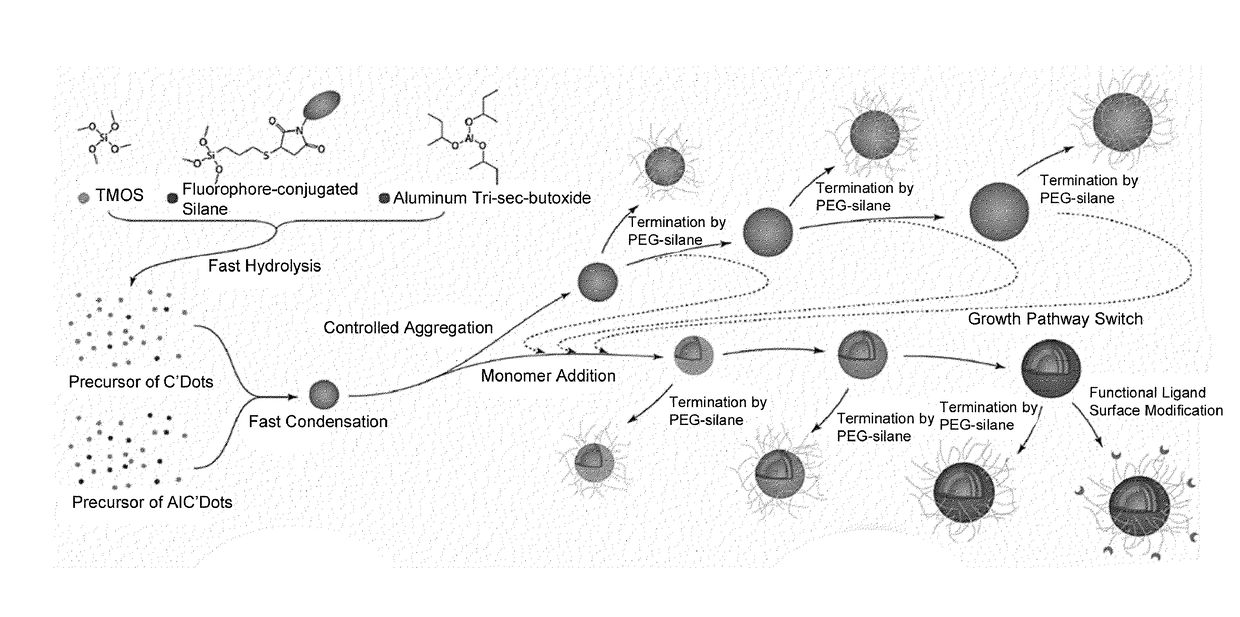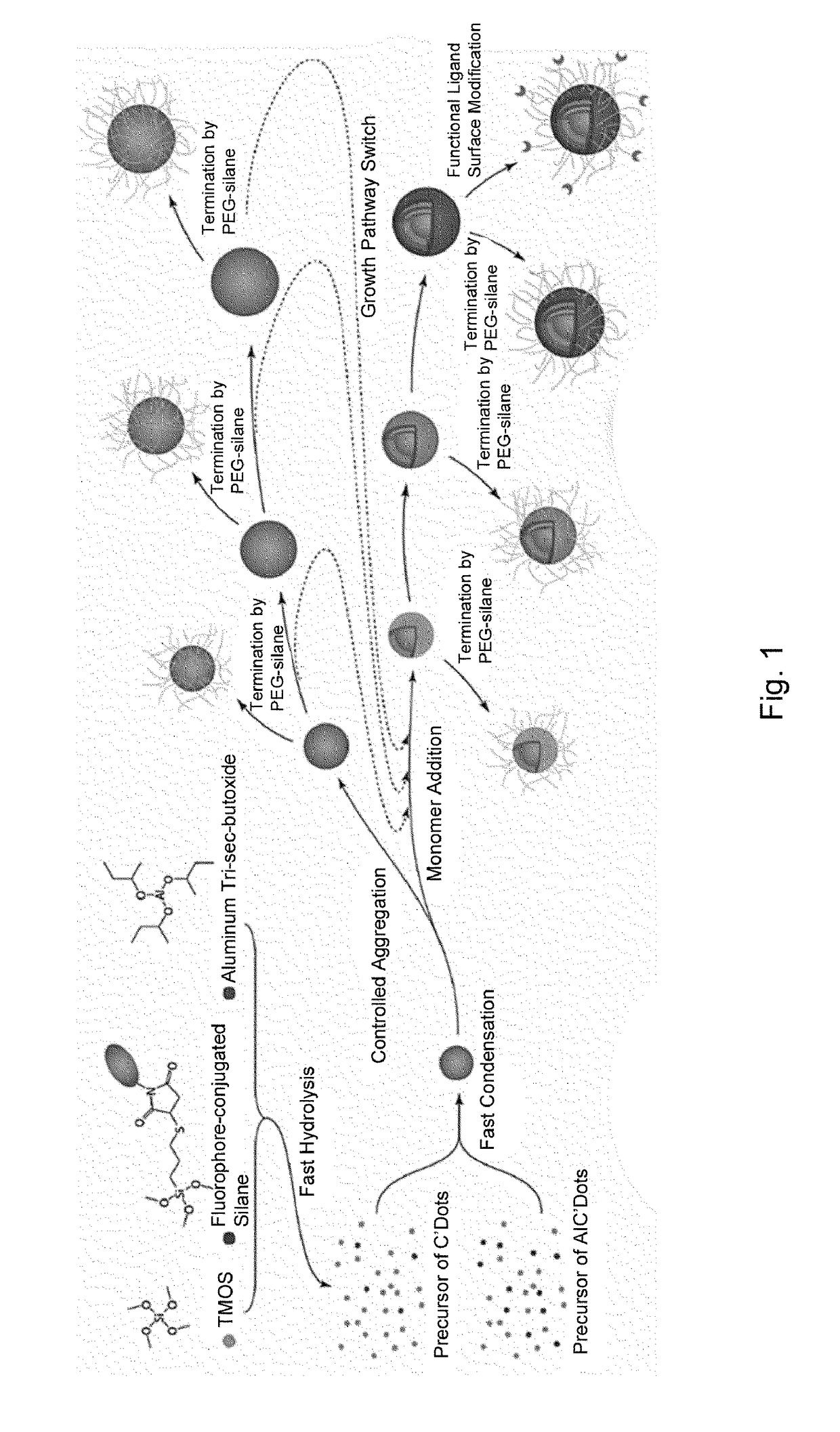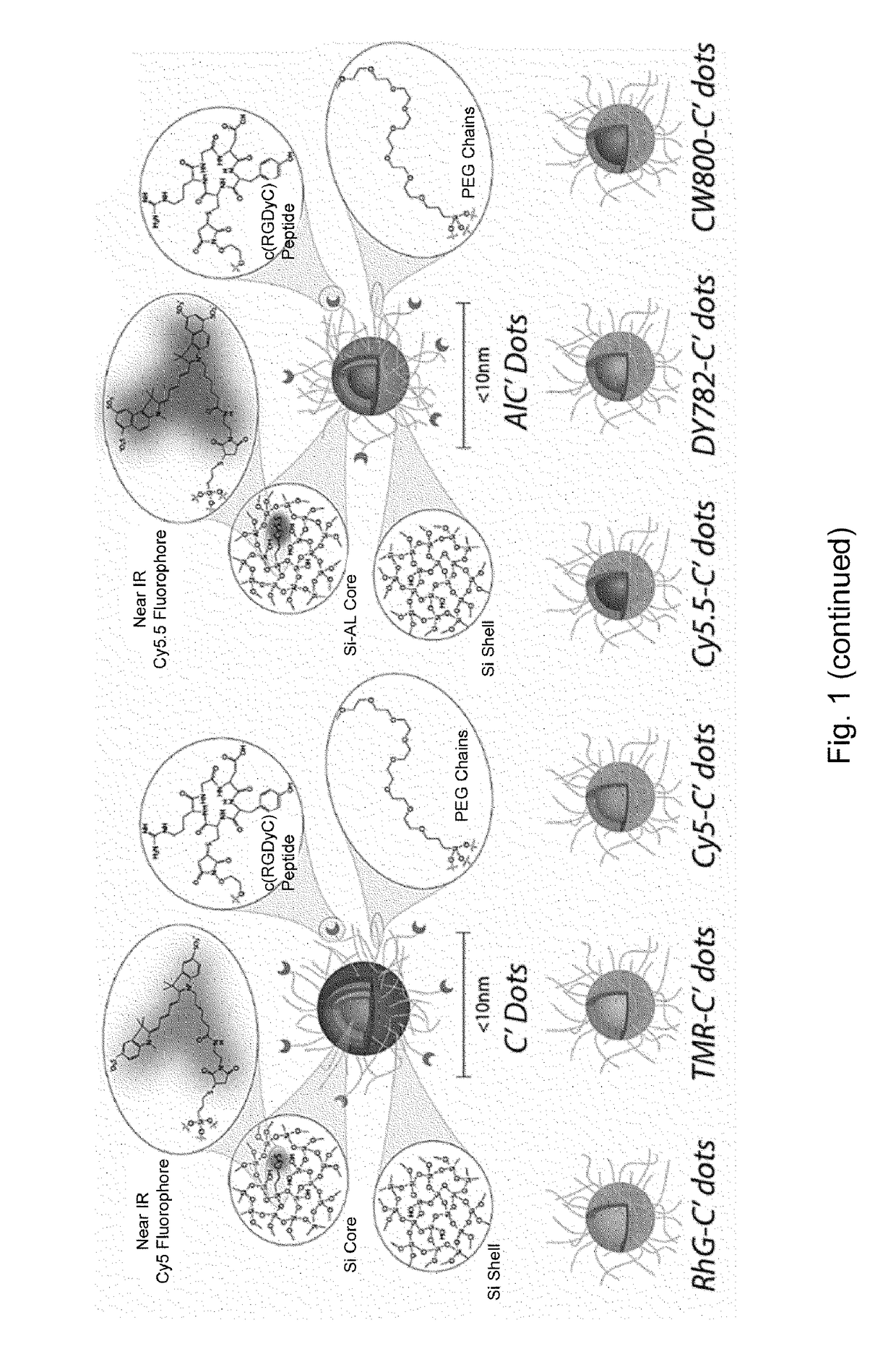Ultrasmall nanoparticles and methods of making and using same
a technology of ultra-small particles and nanoparticles, which is applied in the field of ultra-small nanoparticles and methods of making and using same, can solve the problems of difficult pegs, toxic exposure of tissues to toxic elements, and particle sizes of 10 nm and below are at the limit of size control of this synthesis process, so as to enhance the brightness and encapsulation efficiency of highly negatively charged nir fluorophores.
- Summary
- Abstract
- Description
- Claims
- Application Information
AI Technical Summary
Benefits of technology
Problems solved by technology
Method used
Image
Examples
example 1
[0079]The following in an example of synthesis and characterization of nanoparticles of the present disclosure.
[0080]Ultrasmall fluorescent silica nanoparticles (SNPs) and core-shell SNPs surface functionalized with polyethylene glycol (PEG), specific surface ligands, and overall SNP size in the regime below 10 nm are of rapidly increasing interest for clinical applications due to their favorable biodistribution and safety profiles. Here, an aqueous synthesis methodology for the preparation of narrowly size-dispersed SNPs and core-shell SNPs with size control below 1 nm (e.g., at the level of a single atomic layer) is presented. Different types of fluorophores, including near infrared (NIR) emitters, can be covalently encapsulated. Brightness can be enhanced via addition of extra silica shells. This methodology further enables synthesis of <10 nm sized fluorescent core and core-shell SNPs with previously unknown compositions. In particular addition of an aluminum sol-gel precursor l...
PUM
| Property | Measurement | Unit |
|---|---|---|
| size | aaaaa | aaaaa |
| size | aaaaa | aaaaa |
| pH | aaaaa | aaaaa |
Abstract
Description
Claims
Application Information
 Login to view more
Login to view more - R&D Engineer
- R&D Manager
- IP Professional
- Industry Leading Data Capabilities
- Powerful AI technology
- Patent DNA Extraction
Browse by: Latest US Patents, China's latest patents, Technical Efficacy Thesaurus, Application Domain, Technology Topic.
© 2024 PatSnap. All rights reserved.Legal|Privacy policy|Modern Slavery Act Transparency Statement|Sitemap



